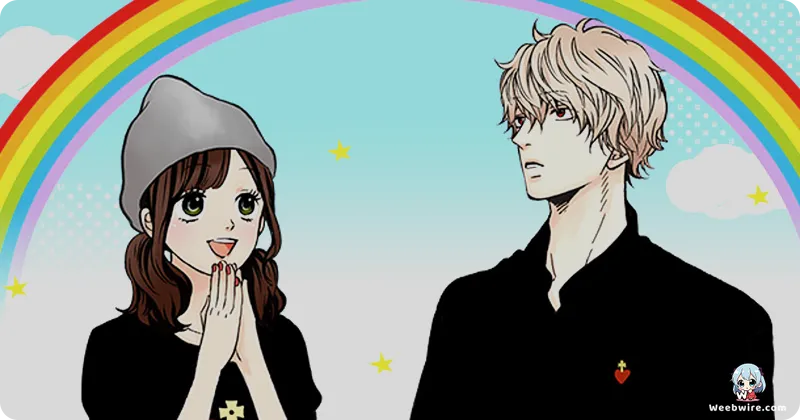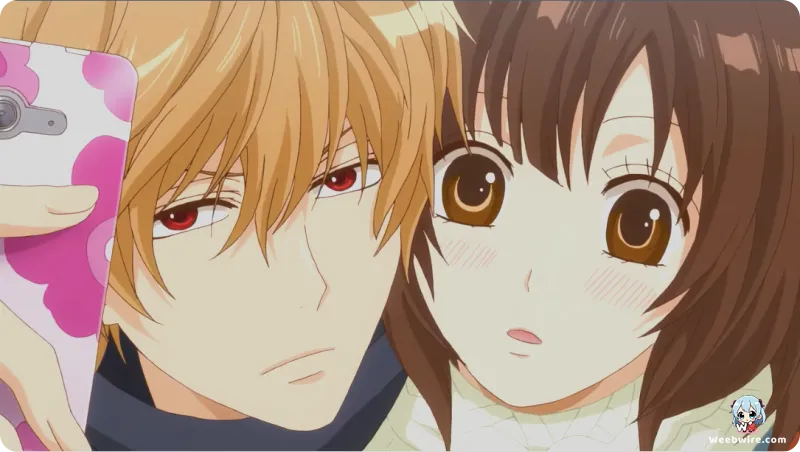Wolf Girl and Black Prince: Unraveling the Iconic Shojo Series' Enduring Appeal and Controversial Charm

First airing in October 2014, TYO Animations' romantic comedy Wolf Girl and Black Prince (Ōkami Shōjo to Kuro Ōji) continues to captivate audiences. Its audacious premise and the compelling, often tumultuous, dynamic between its lead characters set it apart. The series introduces us to Erika Shinohara, a high school freshman desperate for acceptance. To fit in, Erika fabricates a boyfriend, impulsively photographing a handsome stranger she claims as her beau. This stranger, Kyouya Sata, a popular classmate, agrees to play along, but only if Erika becomes his 'dog,' subjecting her to his surprisingly sadistic whims. This unconventional 'master-pet' dynamic forms the humorous and dramatic core, challenging traditional shojo tropes from the outset.
The Enigmatic Black Prince: Kyouya Sata
Kyouya Sata, the enigmatic 'Black Prince,' quickly became a central figure in fan discussions. While his public persona is that of a gentle, adored prince, behind closed doors, he reveals a cynical, cold, and often cruel disposition, relishing Erika's discomfort. This stark duality pushed boundaries for a male romantic lead, showcasing a complex character meticulously crafted by manga author Ayuko Hatta. His intricate personality paved the way for both hilarious situations and genuine emotional growth, making Kyouya memorable beyond his good looks.
The Resilient Wolf Girl: Erika Shinohara
Complementing Kyouya’s complexity is Erika Shinohara, the titular 'Wolf Girl.' Her initial deceit, born from a relatable desire for acceptance, traps her in a relationship where she is metaphorically treated as a pet. Yet, Erika's journey is one of remarkable self-discovery and resilience. Despite Kyouya's harsh treatment, she gradually learns to assert herself and ultimately, see past his facade to the vulnerable person beneath. This evolution from a timid, prevaricating girl to a more assertive individual resonates deeply, highlighting the series' message that true connections blossom from honesty.

Bringing Characters to Life: Voice Acting and Adaptation
The anime's success was significantly bolstered by its exceptional voice acting. Takahiro Sakurai masterfully portrayed Kyouya Sata, seamlessly transitioning between his angelic public facade and sharp, cynical private demeanor. Kanae Itō, as Erika Shinohara, perfectly captured Erika's vulnerability, comedic reactions, and growing strength. Their combined performances brought the 'wolf girl' and 'black prince' dynamic vividly to life, ensuring emotional beats landed with impactful authenticity.
TYO Animations meticulously translated Ayuko Hatta's distinctive art style and comedic timing from the original manga, which ran in Shueisha's Bessatsu Margaret from 2011 to 2016, spanning 16 volumes. The manga's longevity allowed for deep character development beyond the anime's scope. The franchise's widespread appeal was further cemented by a 2016 live-action film adaptation, starring Fumi Nikaido and Kento Yamazaki, underscoring its cultural impact.
The Heart of the Story: Kyouya's Evolution
A fascinating aspect for fans is Kyouya's subtle, gradual shifts in behavior. Initially manipulative, he slowly displays fleeting moments of unexpected kindness or protectiveness. This believable thawing reinforces the idea that even the most seemingly heartless individuals can be touched by genuine affection, forming the true emotional core of Wolf Girl and Black Prince and solidifying its place as a memorable romantic comedy.
Credits
Wolf Girl and Black Prince
Author
Ayuko Hatta
Cover Art
Ayuko Hatta
Studio
TYO Animations
Publisher
Shueisha
Producers





